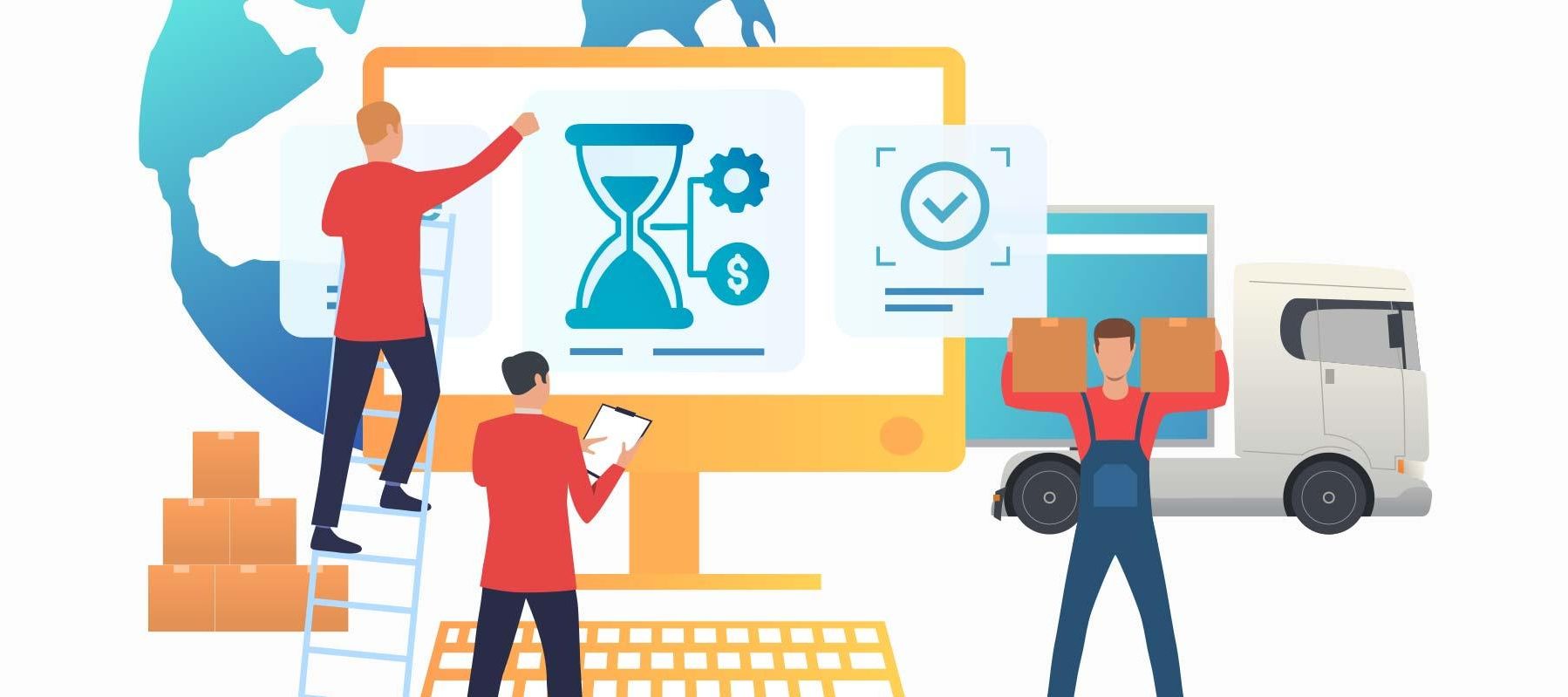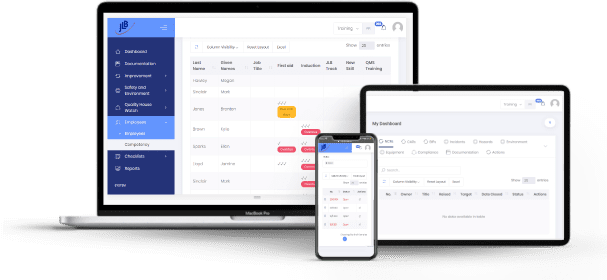
What is an Asset Management System?
An Asset Management System (AMS) is a structured and coordinated system through which an organisation can effectively manage its assets throughout their lifecycle. In this context, assets can be anything that holds value to the organisation. These could include physical, financial, informational or technological assets. An AMS aims to ensure that these assets are utilised as efficiently and effectively as possible, thereby maximising their value to the organisation while minimising risks and costs associated with their ownership and use.
At its core, an Asset Management System integrates various organisational functions such as planning, procurement, maintenance, and disposal of assets. This integration helps to align the management of assets with the broader business objectives of the organisation. The system ensures that all processes related to asset management are standardised and optimised, leading to better decision-making and resource allocation. It is about maintaining assets and making informed decisions regarding their acquisition, storage, use, archiving and eventual disposal.
Further, an effective Asset Management System provides transparency and accountability across the organisation. It helps track asset performance, identify potential issues before they become critical, and ensure that all assets are compliant with regulatory and safety standards. An AMS helps organisations avoid unnecessary costs, enhance asset performance, and improve overall operational efficiency by providing a clear framework for managing assets.
By adopting an Asset Management System, organisations can optimise their assets' performance, reliability, and sustainability, contributing to the business's long-term success.
What are the Benefits of an Asset Management System?
Implementing an Asset Management System offers numerous benefits that can significantly enhance an organisation's operational efficiency and financial performance. One of the primary benefits is improved asset utilisation. By systematically managing assets, organisations can ensure they are used to their full potential, reducing downtime and maximising output. This leads to better returns on investment and reduces the need for unnecessary capital expenditures.
Another key benefit is enhanced risk management. An Asset Management System enables organisations to identify, assess, and mitigate asset ownership and operation risks, including risks related to safety, compliance, and environmental impact. By proactively managing these risks, organisations can avoid financial implications and ensure their assets are compliant with the regulatory requirements. This protects the organisation’s reputation and helps maintain a safe and sustainable working environment.
Furthermore, an Asset Management System fosters better decision-making. With accurate and timely information about the condition and performance of assets, organisations can make informed decisions regarding asset maintenance, replacement, and investment. This data-driven approach ensures that resources are allocated efficiently and that asset-related decisions are aligned with the organisation’s strategic objectives. This, in turn, leads to improved financial performance and a stronger competitive advantage.
Lastly, an Asset Management System contributes to long-term sustainability. By optimising asset management processes, organisations can reduce waste, minimise environmental impact, and extend the life of their assets. This supports corporate sustainability goals and leads to cost savings in the long run. In a business environment where sustainability is increasingly important, having an AMS can enhance an organisation’s reputation and appeal to stakeholders who value environmental responsibility.
Implementing an Asset Management System can assist your business to:
- improved financial performance
- informed asset investment decisions
- improved services and outputs
- demonstrated social responsibility
- improved organisational sustainability
What is ISO 55001?
ISO 55001 is an internationally recognised standard that provides a framework for establishing, implementing, maintaining, and improving an Asset Management System (AMS). It focuses on aligning asset management activities with organisational objectives and strategies while managing risks and costs throughout the asset lifecycle.
ISO 55001 covers various aspects of asset management, including risk management, performance monitoring, decision-making, and continuous improvement. The standard emphasises risk-based thinking, requiring organisations to assess and mitigate risks related to their assets. This proactive approach helps reduce unexpected costs and disruptions, and by adopting this standard, organisations can manage their assets systematically and efficiently. ISO 55001 also promotes accountability, clearly defining and documenting roles, responsibilities, and processes, ensuring consistent and efficient asset management.
ISO 55001 facilitates the integration of asset management with other management systems such as like ISO 9001 (Quality Management Systems) and ISO 14001 (Environmental Management Systems), leading to improved efficiency and overall performance. By adopting this standard, organisations can enhance the reliability and effectiveness of their asset management practices.
Why Certify Your Asset Management System to the ISO 55001 Standard?
Certifying your company’s Asset Management System to the ISO 55001 standard offers numerous advantages that can significantly enhance your business operations and credibility. Certification provides formal recognition that your organisation adheres to internationally recognised best practices in asset management, boosting your organisation’s reputation and builds trust with clients, stakeholders, and regulatory bodies.
Certifying to ISO 55001 involves a comprehensive assessment of your asset management processes. This process helps pinpoint areas for improvement, leading to more effective resource utilisation and improved decision-making. Sustaining certification ensures that your asset management system stays current and adapts to changes in your business environment.
Obtaining ISO 55001 certification can provide your organisation with a competitive advantage. ISO 55001 focuses on optimising the lifecycle of assets, from acquisition to disposal, minimising waste, and reducing environmental impact. It also emphasises risk management and the efficient use of resources, which contributes to long-term sustainability. The certification proves a company’s reliability and competence in maintaining asset performance, helping to avoid costly failures or inefficiencies.
Implementing, developing and certifying your Asset Management System to the ISO 55001 Standard can benefit your business and assist it to:
- enhance Operational Efficiency by improving services and outputs
- make informed asset investment decisions and maximise return on investment.
- improve Asset and Financial Performance
- strengthen Risk Management
- increase Stakeholder Confidence by building reputation and reliability
- ensure Regulatory Compliance
- reduce Costs
- support Sustainability Goals
- drive Continuous Improvement
- facilitate Strategic Decision-Making
- gain a Competitive Advantage
- demonstrate Social Responsibility
- improve organisational sustainability
- identify and eliminate wasting assets
- improve asset utilisation
How We Can Help With Your Asset Management System
At JLB, we specialise in guiding organisations to achieve Asset Management Systems (AMS) certification. Our approach is customised to fit your unique needs, ensuring that your AMS is compliant with the ISO 55001 standard and tailored to your industry, business size, and specific asset management requirements.
We conduct a comprehensive Gap Analysis to assess your current management practices against the ISO 55001 requirements, identifying areas that need improvement and creating a clear roadmap for certification. Our team works closely with your organisation to develop and implement necessary policies, processes, and documentation for your Asset Management System, ensuring alignment with your strategic objectives and incorporating Strategic Asset Management Plan (SAMP) and Asset Management Plan (AMP) for other operational needs.
We also provide comprehensive support in preparing your organisation for the certification audit by a third-party certification body and offer ongoing assistance for maintaining and continually improving your asset management system.
- we review your current asset management practices and ensure your business has addressed the basic requirements of asset management
- we then develop a Management Manual in your own terminology to reflect how your business addresses the requirements of ISO 55001
- we then develop a Strategic Asset Management Plan (SAMP) with your team to ensure the requirements for maintenance of assets is uniformly embraced throughout the business
- we then develop an Asset Management Plan (AMP) for groups of assets which may be managed differently, while but still complying with the SAMP
- we train your Internal Audit Team and conduct the first audit
- we ensure a continual improvement program operates and prepare you for certification
What to Expect When You Work with JLB
JLB knows that the strength of an Asset Management System is based a thorough and detailed risk assessment in the first instance. Our consultants have the technical information, audit experience and industry knowledge to lead you through this process and ultimately add value to your management system.
Our longevity in the industry, expert knowledge and experience, and hands-on approach to implementing management systems mean you can be sure you’ll achieve third-party certification the first time around.
Let JLB add value to your organisation by implementing an Asset Management System.
The ISO 55001 Asset Management System Process
The Asset Management Process at JLB offers a systematic method to take your organisation from grasping the essentials of asset management to obtaining and sustaining ISO 55001 certification. We assist in ensuring compliance, performing internal audits, and fostering continuous improvement. This thorough process enhances your asset management practices, boosting efficiency, risk management, and overall business success.
Learn about the international standard and what achieving ISO 55001 can do for your business
Our experienced, committed and dedicated team tailors a program to suit your individual needs
Third party assessment to gain certification for your Information Security Management System
JLB is available to maintain your system to ensure compliance and continual improvement
ISO 55001 Asset Management System Documentation
We develop comprehensive and precise documentation that meets the standard's requirements. This includes creating and organising essential documents such as the Strategic Asset Management Plan (SAMP), the Asset Management Policy (AMP), asset register, risk assessments, treatment plans, and the Asset Management System Manual.
Why Choose JLB for your ISO 55001 Asset Management System development?
- Experienced Asset Management Consultants
- Tailored Asset Management System implementation
- Maintenance of your Asset Management System
- Asset Management System Training
- Risk Assessment Software
- Integration with other Standards.
JLB is a leading Australian management systems consultancy with over 35 years of experience and expertise in helping businesses develop, implement and achieve ISO certifications.
Talk to us today to learn how an ISO 55001 certified Asset Management System can help your business manage its assets.

